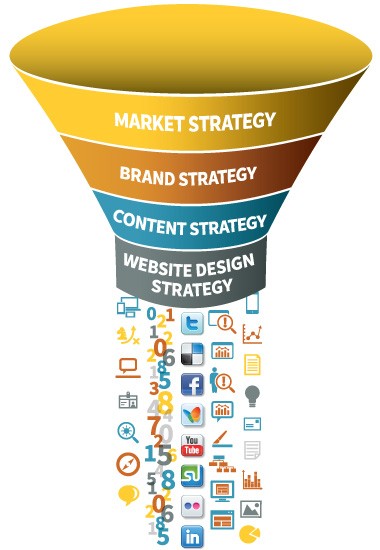Understanding UX & UI Design vs. Web Design


You are in charge of Marketing. Your competitor just launched a new site. And it’s good. They have case studies, testimonials, video and interactive diagrams. What’s even more disconcerting is that they are telling a compelling story with a point of view. Their copy is solid, design is modern; They got their branding right.
Your CEO is not happy, wants to see something done about it and wants results fast… but within a budget. How do you get it done?
The other day, I saw a website for an agency that uses the tagline, “We Work on Your Business, Not Just Your Website.” I related to the line’s strategic positioning and have to admit to being disappointed that I hadn’t come up with it myself.
Mobility has rendered the long scrolling web page the design standard for modern websites. But does it work? By work I mean does it provide a good user experience for your visitors and do people actually scroll down to that 3rd, 4th, 5th panel and beyond? Even as someone that is creating scrolling sites, I’ve had a gut feeling that few visitors venture “beneath the fold,” just as few Google visitors venture past page one of Search results. So I did a little research to either support my instincts or cause me to reflect on my dinosaur delusions. Read more
Cruise around most neighborhoods this time of year and you’ll see people outside pruning, fertilizing, watering and planting. Like a garden, your website is a living, growing thing. Many people believe that maintaining a website is a lot of work, so we’ve brainstormed six quick ways to revitalize your website design that will improve your marketing and visitor engagement.
Sometimes when people come to us for “branding,” I quickly ascertain that what they really mean is an updated “visual identity.”
“So, you’re looking for help integrating your vision, competitive positioning, audience messaging, market perception and corporate culture,” I might ask. Just as often they respond, “I just need an update to our logo, collateral templates, PowerPoint, web design, etc.” For many, the visual manifestations of a brand are “The Brand.”
In our data and analytics driven marketing world, why would something so touchy feely, so ethereal and hard to quantify as brand personality be something you care about?
Everyone wants to be Apple. Everyone wants to, “Think Different.”
We’ve talked about Market Strategy, Brand Strategy and Content Strategy, so why do we need a Web Design Strategy? Because, of all of these strategies, only your Website Design Strategy is externally facing. Let’s put Website Desgn Strategy into context to clarify how these strategies work in tandem.

Once this is determined, your Brand Strategy encompasses the way you describe what you do, for what audiences with a compettive value statement, which sets you apart from your competition. You socialize this brand internally, and externally at every customer and employee touchpoint.
The power of a relevant Content Strategy — based on sound Market and Brand Strategies — is to create a program to disseminate and exchange your valuable content across all media and over time, which leads us to your Website Design Strategy.

Infographics are taking over the earth! At least it seems that way. There has been an explosion of infographics on the web — in both B2C and B2B — literally illustrating that a picture is indeed worth a thousand words. But before we get into what makes a good one, let’s define what an infographic is and why they have reached the tipping point.